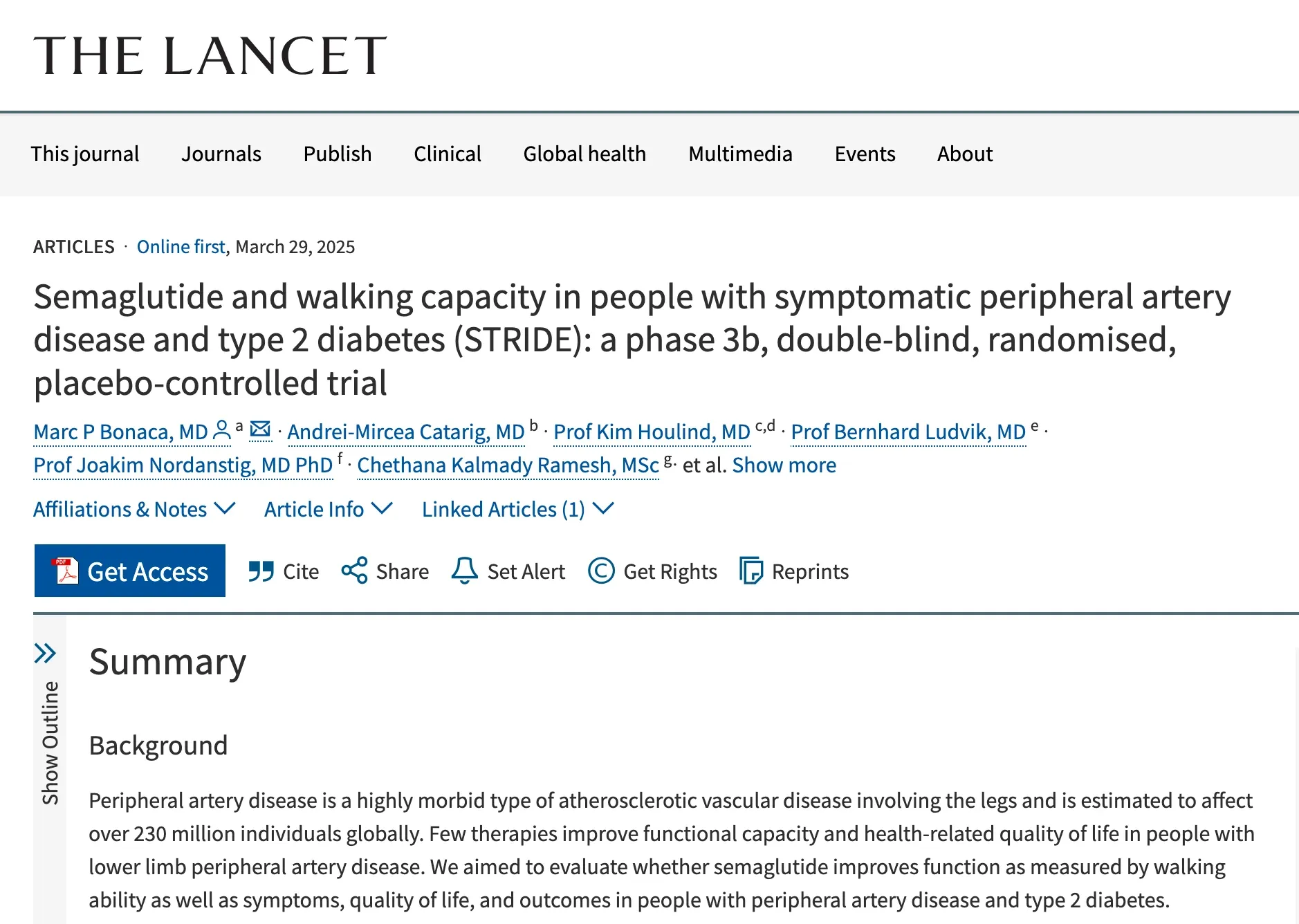STRIDE study: GLP1s vs peripheral artery disease (PAD)
Walk farther with GLP1s -- results from the STRIDE study show Semaglutide effective for treating Peripheral Artery Disease (PAD)

The benefits of GLP Receptor Agonists are well known these days – they're incredibly popular for weight loss, and some are taking them for things you might not expect, like Sleep apnea.
Check out our quick explainer
The difference between GLP1s and almost all other weight-loss "cures" or methodologies that came before it is the amount of clinical research data that is behind GLP1s. We're excited to see more published data, and the STRIDE study is another data point on the benefits of GLP1s.

The paper itself is available for direct reading via The Lancet:

Want to read more about PAD, and the STRIDE study along with our analysis? The rest of this article is no longer available for free – if you'd like to read the rest of our analysis, check us out on Substack:





